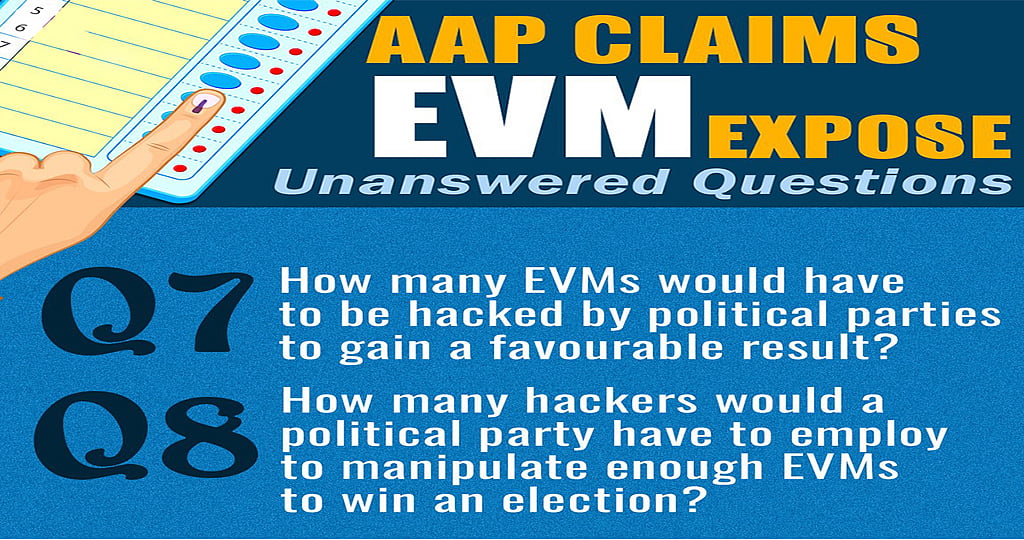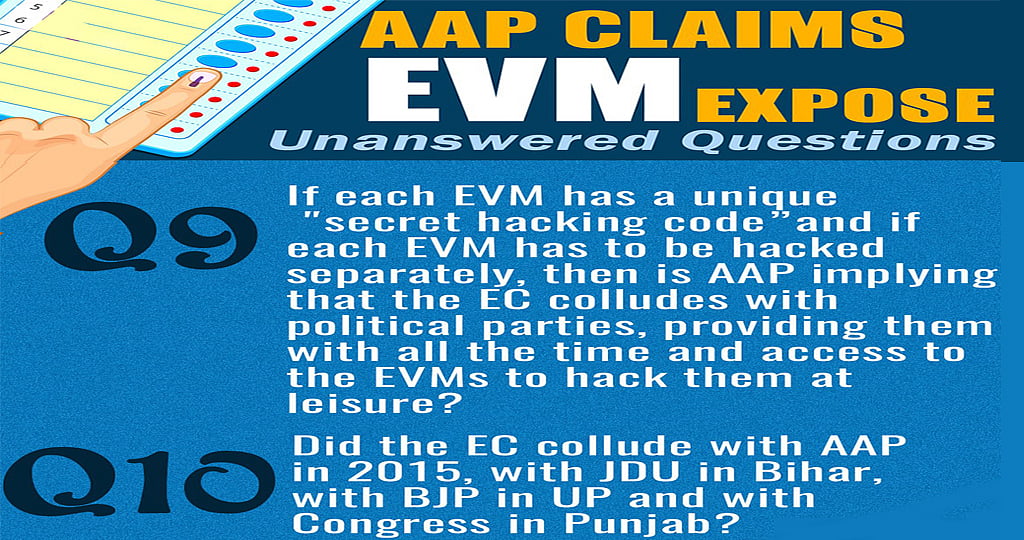10 questions AAP’s EVM ‘exposé’ fails to answer; some to EC too
While AAP’s theatrical ‘exposé’ leaves many questions unanswered, the Election Commission also needs to come clean on many serious issues regarding the EVMs

The media had been teased, suspense had piqued and the stage at the Delhi Assembly was set. The Aam Aadmi Party had organised on Tuesday a demonstration to expose how electronic voting machines (EVMs) can be hacked.
The theatrical demonstration was being seen as a strategy to deflect attention from sacked party man Kapil Mishra’s allegation that he saw Arvind Kejriwal accept ₹2 crore as a bribe from Satyendra Jain.
And, while Greater Kailash MLA Saurabh Bhardwaj had patiently gone about his demo, here’s a set of questions he did not answer.

.jpg?auto=format%2Ccompress)


However, it may not be right to simply accept that the EVMs are completely “tamper-proof” as the EC claims. Thewire.in had certain specific questions for the Election Commission too:
- When the EC last conducted a supposedly independent review of its EVMs in 2006, the Commission asserted that its machines were “tamper-proof”. But as has been pointed out, none of the people who conducted that review were computer security experts – while the machines’ manufacturers (ECIL and BEL) were also involved in the checks. Why, then, is the EC so guarded about the EVMs, continuing to refuse independent checks? What’s there to lose?
- A vulnerability analysis of a ‘genuine’ EVM in 2010 revealed that there were no cryptographic mechanisms encoded into the central processing unit (CPU) of the machine. Such mechanisms are simple to incorporate, yet their non-inclusion means that the CPU can be replaced with a doppelgänger before being integrated with the machine and the EC would be none the wiser. Why was such a glaring loophole left unattended?
- Kejriwal, Bahujan Samaj Party chief Mayawati, members of the Congress and the Samajwadi Party have all alleged that EVMs have been tampered with in various areas. It is possible that the EC is absolutely sure about the integrity of its EVMs – but wouldn’t that provide all the more reason to submit their machines to an independent, expert check to quell dissatisfaction among the politicians?
Courtesy: thequint.com, thewire.in
Follow us on: Facebook, Twitter, Google News, Instagram
Join our official telegram channel (@nationalherald) and stay updated with the latest headlines